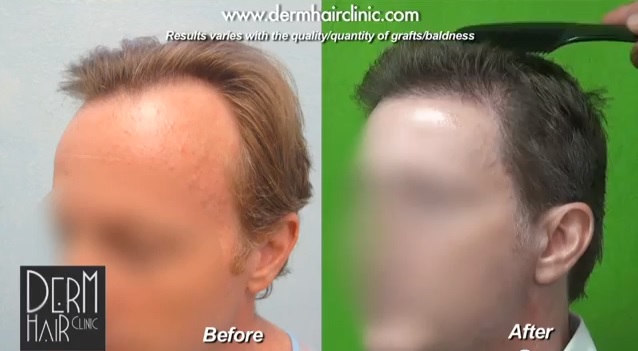EMOTIONALLY DEALING WITH HAIR LOSS
One of the most important factors in order to treat hair loss, hair thinning or balding is to first understand the underlying cause. It’s also important to address the negative affect is has on mental well being. Hair loss, known clinically as alopecia, is more than a physical issue in appearance. Its physical effects are indeed apparent but its most profound impact is sometimes emotionally dealing with hair loss. The depths of emotional anguish that hair loss can cause, however, can be solved with hair transplantation.

HAIR LOSS CAUSATION FACTORS
Different factors contribute to hair loss, which distinctly affect men and women in both appearance and time frames. Men tend to lose hair based solely on genetics. Women typically experience temporary hair loss due to psychological factors and permanently due to aging and hormonal imbalance.
The most common factor in hair loss for men and women is androgenic alopecia, or pattern baldness. This genetic condition makes recipients more sensitive to the hormone dihydrotestosterone (DHT), which miniaturizes follicles. Those with genetically weak androgen receptors thus suffer hair loss.
Alopecia is a chronic disorder that has four main subtypes:
- Androgenic alopecia: distinct pattern of hair loss due to genetics
- Alopecia areata: hair loss patches on the head; most responsive to treatment
- Alopecia totalis: complete hair loss on the head
- Alopecia universalis: hair loss on the head and body
Alopecia areata is a chronic inflammatory disease that affects the hair follicles and can be diagnosed by a dermatologist. For emotionally dealing with hair loss, therapy with a psychologist may be required. Though not life threatening or painful, hair loss can cause skin irritation. Physical problems may also result from the loss of eyelashes and eyebrows. Though doctors know it is an autoimmune disorder that arises from both genetic and environmental influences, they still aren’t sure of the exact cause.
SELF-IMPOSED HAIR LOSS
Those of African descent have prevalent hairstyles that can cause non-genetic hair loss, known as traction alopecia. It occurs from continuous, repeated pulling of hair. Noticeable thinning occurs along the entire scalp periphery with continuous hairstyles. Emotionally dealing with hair loss for this non-genetic hair loss entails preventative measures as the best option. Sufferers must minimize scalp irritation, decrease continued hair pulling and improve overall health to increase hair vitality. When traction alopecia is not reversible, hair restoration solutions are available. These include oral and topical pharmaceuticals, cosmetic concealers, hairpieces, and surgical hair restoration.
In Emotionally Dealing with Hair Loss: Part 2, we’ll discuss more of the mental affects of the condition and surgical treatments for hair restoration.

